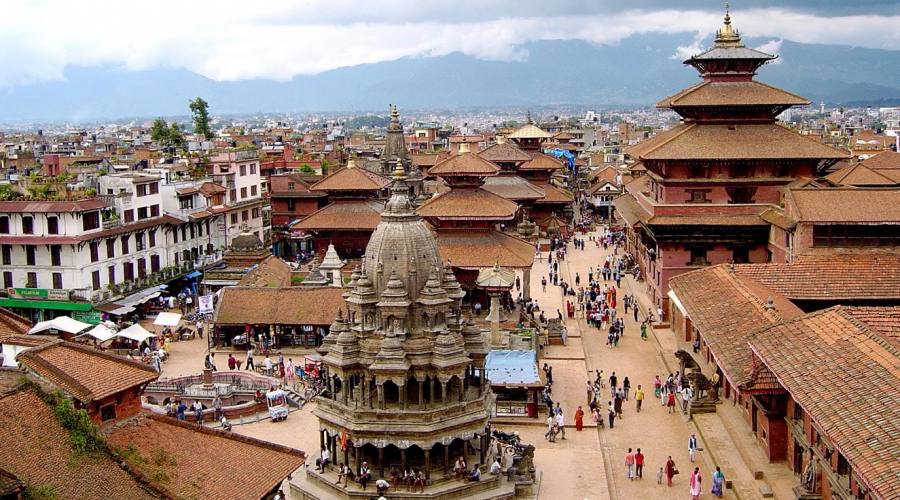

The History of Buddhism in India and Nepal
Posted on April 10, 2024
Buddhism, one of the world’s major religions, has a rich history deeply rooted in the Indian subcontinent, with its origins in India and significant development in Nepal. This blog explores the profound journey of Buddhism from its inception to its influence and legacy in India and Nepal, highlighting key historical milestones and the enduring spiritual significance of Buddhist sites in these regions.
The Origins of Buddhism in India
1. The Birth of Siddhartha Gautama:
Buddhism traces its origins to the birth of Siddhartha Gautama around 563 BCE in Lumbini, which is now in modern-day Nepal. Siddhartha was born into a royal family in the Shakya clan and led a sheltered life until he encountered the realities of suffering, which prompted his quest for enlightenment.
2. The Path to Enlightenment:
At the age of 29, Siddhartha renounced his princely life to seek spiritual wisdom. After years of ascetic practices, he attained enlightenment under the Bodhi Tree in Bodh Gaya, India, around 528 BCE. He became known as the Buddha, the Enlightened One.
3. The First Sermon:
The Buddha delivered his first sermon at Sarnath near Varanasi, setting in motion the Wheel of Dharma. This sermon, known as the Dhammacakkappavattana Sutta, outlined the Four Noble Truths and the Eightfold Path, foundational principles of Buddhism.
4. The Spread of Buddhism:
Following his enlightenment, the Buddha traveled extensively across northern India, teaching and establishing a monastic community (Sangha). His teachings attracted followers from all walks of life, including kings, merchants, and commoners.
Buddhism in Nepal
1. Lumbini: The Birthplace of Buddha:
Lumbini, a UNESCO World Heritage Site, is the sacred birthplace of Siddhartha Gautama. The Maya Devi Temple marks the exact spot of his birth, and the site is a major pilgrimage destination for Buddhists worldwide.
2. The Influence of Ashoka:
Emperor Ashoka, one of India’s greatest rulers, played a pivotal role in spreading Buddhism in Nepal during the 3rd century BCE. He visited Lumbini and erected the Ashoka Pillar, inscribed with a dedication to the birthplace of the Buddha.
3. The Rise of Monastic Centers:
Nepal became a significant center for Buddhist learning and practice. The Kathmandu Valley, in particular, saw the establishment of many monasteries (viharas) and stupas, including the famous Swayambhunath and Boudhanath stupas.
The Golden Age and Decline in India
1. The Maurya and Gupta Empires:
Under the patronage of Emperor Ashoka and later the Gupta Empire, Buddhism flourished in
India. Ashoka’s support led to the construction of stupas, viharas, and the spread of Buddhist
teachings across Asia.
2. Nalanda and Vikramashila Universities:
These ancient universities became renowned centers of Buddhist learning, attracting scholars
from across Asia. Nalanda, in particular, was instrumental in the development of Mahayana
Buddhism.
3. Decline of Buddhism in India:
By the 12th century, Buddhism saw a decline in India due to various factors, including the resurgence of Hinduism and invasions that destroyed many Buddhist institutions. However, Buddhism’s legacy continued to thrive in other parts of Asia.
Revival and Modern Influence
1. Anagarika Dharmapala and the Revival:
The 19th and 20th centuries witnessed a revival of Buddhism in India, spearheaded by figures like Anagarika Dharmapala. The revival was marked by the restoration of key Buddhist sites and the promotion of Buddhist teachings.
2. Dr. B.R. Ambedkar and Dalit Buddhism:
In 1956, Dr. B.R. Ambedkar, a prominent social reformer, converted to Buddhism along with millions of his followers, giving rise to the Dalit Buddhist movement. This movement played a crucial role in the modern resurgence of Buddhism in India.
3. Contemporary Buddhism:
Today, Buddhism continues to be an important spiritual and cultural force in India and Nepal. Major pilgrimage sites like Bodh Gaya, Sarnath, and Lumbini attract millions of pilgrims and tourists, contributing to the global spread of Buddhist teachings.
Conclusion
The history of Buddhism in India and Nepal is a testament to the enduring legacy of the Buddha’s teachings. From its origins in the ancient Indian subcontinent to its profound influence in Nepal, Buddhism has shaped the spiritual and cultural landscape of these regions. As modern pilgrims and travelers explore these sacred sites, they not only connect with the rich history of Buddhism but also embark on a journey of self-discovery and spiritual enrichment.
For more information on our Buddhist pilgrimage tours, visit [Buddha Trails Tours](https://
b u d d h a t r a i l s . t o u r s / ) o r c o n t a c t u s a t [ c o n t a c t @ b u d d h a t r a i l s . t o u r s ]
(mailto:contact@buddhatrails.tours). Embark on a journey that delves into the rich history and
spiritual heritage of Buddhism. Your spiritual odyssey awaits
